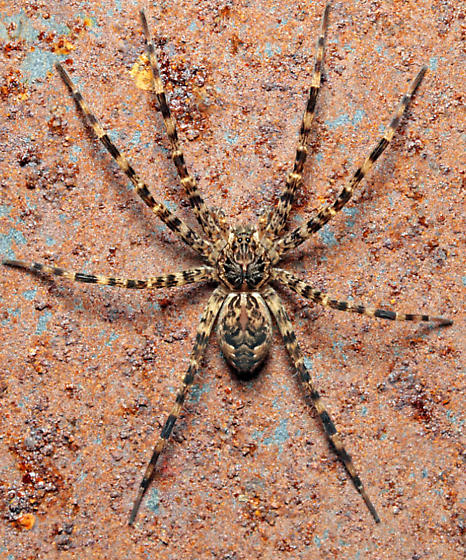That's not a Wolf Spider, although it's often mistaken for one. The long, jagged-edged-banded legs, splayed out in a characteristic flat posture, and the large, round carapace are pretty characteristic indicators of a Dolomedes fishing spider - one of the terrestrial ones that have moved into drier, upland areas and hunt more like Wolf Spiders do. There are two species this could be, but the fact that you don't see a full white underline beneath the 'w's on its abdomen tells you it's not Dolomedes scriptus, but its common relative Dolomedes tenebrosus. These spiders are actually pretty mild-mannered and can make good pets (as spiders go), but they will bite if bothered too much (how much "too much" is seems to be different from spider to spider). The bite can be painful because of their size and large fangs, but the venom is not particularly effective against humans. I'd rate it as a lot less painful than even a mild wasp sting, although of course every individual spider and every individual human is different. Here's a link to the Bug Guide page, which has more information and lots of photos.. https://bugguide.net/node/view/2011
I should also add that these guys eat beetles and other relatively large insects and small animals that you might or might not want to share your home, if that makes any difference. I can't see its pedipalps clearly, but the large cephalothorax and relatively small abdomen make me suspect it's an adult male, just wandering around looking for love. It's unlikely that you have all that many individuals living with you - unless you have a dirt cellar, of course; they seem to like places that are a bit cave-like.
I also forgot I'm supposed to include an image:

